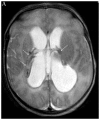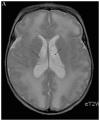Paediatric Virology and its interaction between basic science and clinical practice (Review)
- PMID: 29328393
- PMCID: PMC5819919
- DOI: 10.3892/ijmm.2018.3364
Paediatric Virology and its interaction between basic science and clinical practice (Review)
Abstract
The 3rd Workshop on Paediatric Virology, which took place on October 7th, 2017 in Athens, Greece, highlighted the role of breast feeding in the prevention of viral infections during the first years of life. Moreover, it focused on the long-term outcomes of respiratory syncytial virus and rhinovirus infections in prematurely born infants and emphasised the necessity for the development of relevant preventative strategies. Other topics that were covered included the vaccination policy in relation to the migration crisis, mother‑to‑child transmission of hepatitis B and C viruses, vaccination against human papilloma viruses in boys and advances on intranasal live‑attenuated vaccination against influenza. Emphasis was also given to the role of probiotics in the management of viral infections in childhood, the potential association between viral infections and the pathogenesis of asthma, fetal and neonatal brain imaging and the paediatric intensive care of children with central nervous system viral infections. Moreover, an interesting overview of the viral causes of perinatal mortality in ancient Greece was given, where recent archaeological findings from the Athenian Agora's bone well were presented. Finally, different continuing medical educational options in Paediatric Virology were analysed and evaluated. The present review provides an update of the key topics discussed during the workshop.
Conflict of interest statement
Demetrios Spandidos is the Editor-in-Chief for the journal, but had no personal involvement in the reviewing process, or any influence in terms of adjudicating on the final decision, for this article.
Figures






References
-
- Greenough A, Osborne J, Sutherland S, editors. Congenital, Perinatal, and Neonatal Infections. Churchill Livingstone; Edinburgh: 1992.
-
- Mammas IN, Greenough A, Theodoridou M, Kramvis A, Christaki I, Koutsaftiki C, Koutsaki M, Portaliou DM, Kostagianni G, Panagopoulou P, Sourvinos G, Spandidos DA. Current views and advances on Paediatric Virology: An update for paediatric trainees. Exp Ther Med. 2016;11:6–14. doi: 10.3892/etm.2015.2890. - DOI - PMC - PubMed
Publication types
MeSH terms
LinkOut - more resources
Full Text Sources
Other Literature Sources
Medical

